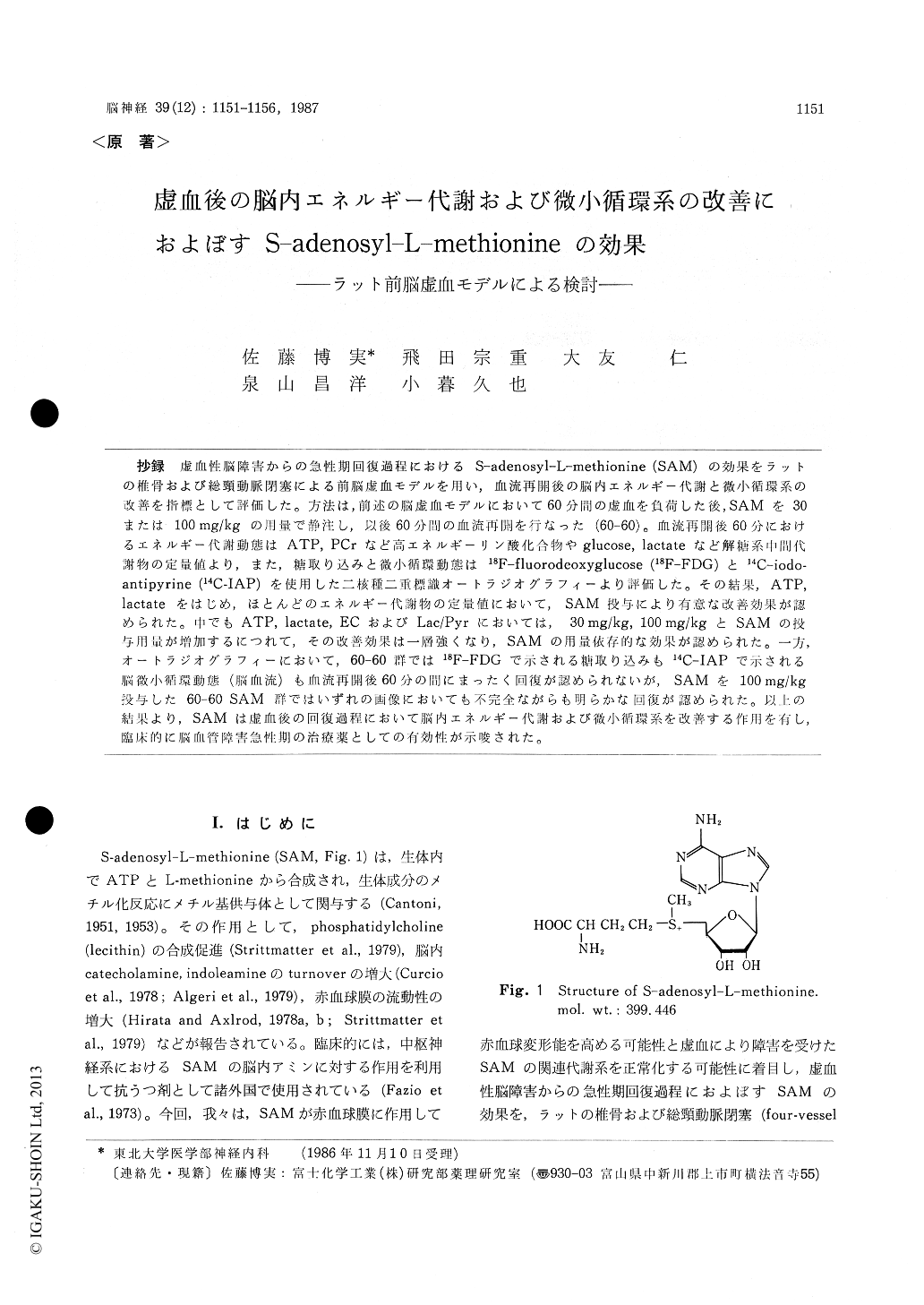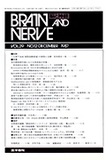Japanese
English
- 有料閲覧
- Abstract 文献概要
- 1ページ目 Look Inside
抄録 虚血性脳障害からの急性期回復過程におけるS-adenosyl-L-methionine (SAM)の効果をラットの椎骨および総頸動脈閉塞による前脳虚血モデルを用い,血流再開後の脳内エネルギー代謝と微小循環系の改善を指標として評価した。方法は,前述の脳虚血モデルにおいて60分開の虚血を負荷した後,SAMを30または100mg/kgの用量で静注し,以後60分間の血流再開を行なった(60-60)。血流再開後60分におけるエネルギー代謝動態はATP, PCrなど高エネルギーリン酸化合物やglucose, lactateなど解糖系中間代謝物の定量値より,また,糖取り込みと微小循環動態は18F-fluorodeoxyglucose (18F-FDG)と14C-iodo-antipyrine (14C-IAP)を使用した二核種二重標識オートラジオグラフィーより評価した。その結果,ATP,lactateをはじめ,ほとんどのエネルギー代謝物の定量値において,SAM投与により有意な改善効果が認められた。中でもATP, lactate, ECおよびLac/Pyrにおいては,30mg/kg, 100mg/kgとSAMの投与用量が増加するにつれて,その改善効果は一層強くなり,SAMの用最依存的な効果が認められた。一方,オートラジオグラフィーにおいて,60-60群では18F-FDGで示される糖取り込みも14C-IAPで示される脳微小循環動態(脳血流)も血流再開後60分の間にまったく回復が認められないが,SAMを100mg/kg投与した60/60SAM群ではいずれの画像においても不完全ながらも明らかな回復が認められた。以上の結果より,SAMは虚血後の回復過程において脳内エネルギー代謝および微小循環系を改善する作用を有し,臨床的に脳血管障害楚気性期の治療薬としての有効性が示唆された。
Effects of S-adenosyl-L-methionine (SAM) on the improvement of cerebral energy metabolism and microcirculation were examined in postische-mic rat brain.
Male Wistar rats, whose vertebral arteries were elecrically cauterized last day, were subjected to forebrain ischemia by temporary clipping of both common carotid arteries. After 60 min of ischemic insult, they were intravenously administered with SAM at doses of 30 or 100 mg/kg ; this was fol-lowed by recirculation for 60 min. To determine cerebral concentrations of energy metabolites, the brain was frozen in situ. Adenine nucleotides (ATP, ADP, AMP) were assayed by anion-ex-change HPLC system, and other metabolites (PCr, glucose, lactate, pyruvate) were analyzed by enzy-matic fluorometry. In order to estimate regional cerebral blood flow (rCBF) and glucose utiliza-tion, double-tracer autoradiography was undertaken using 14C-iodoantipyrine (14C-IAP) and 18F-fluoro-deoxyglucose (18F-FDG).
In animals without SAM treatment (60-60 group), energy metabolites did not recover and neither CBF nor glucose uptake resored during 60 min of recirculation. In contrast, in SAM-treated animals (60-60 SAM group), values of the energy metabo-lites improved significantly and both CBF and glucose uptake recovered, though incompletely. These results indicate that SAM is able to im-prove postischemic cerebral microcirculation and energy metabolism. For mechanisms of the effects, it is suggested to the enhancement of erythrocyte deformability by phospholipid methylation, the stabilization of mitochondria, and the normaliza-tion of injured metabolic reactions. Therefore, we conclude that SAM is able to be effective clini-cally as a drug treated for the actute phase of cerebrovascular diseases.

Copyright © 1987, Igaku-Shoin Ltd. All rights reserved.


